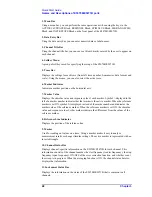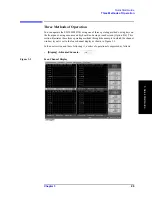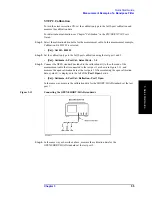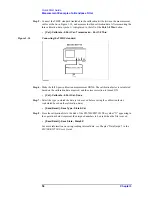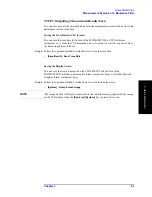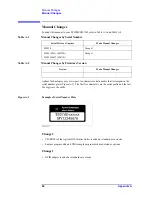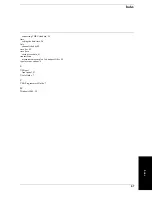
Chapter 3
59
Quick Start Guide
Measurement Example of a Bandpass Filter
3. Quick S
tart
G
u
ide
Measuring the -3 dB Bandwidth
Using the marker bandwidth search function, the bandwidth, center frequency between two
cutoff frequency points, Q value, and insertion loss are all read out. These parameters are
described in Table 3-1.
NOTE
If the two cutoff frequency points are not found, all data items except the insertion loss
revert to zero.
Step 1.
Display the marker.
•
[Marker] - Marker 1
Step 2.
Using one of the following methods, move the marker to the center frequency of the
bandpass filter.
•
On the entry bar, press
[9] [4] [7] [.] [5] [M/
μ
]
.
•
Turn the rotary knob (
) on the front panel to set it to the center frequency (947.5
MHz).
Step 3.
Specify the bandwidth definition value that defines the pass band of the filter. In this
measurement example, it is set to -3 dB.
•
[Marker Search] - Bandwidth Value - [+/-] [3] [x 1]
Step 4.
Set the bandwidth search function ON.
•
[Marker Search] - Bandwidth
Step 5.
The bandwidth data items (BW, cent, low, high, Q, loss) will be displayed. (See Figure
3-18.)
Table 3-1
Parameters for the Bandwidth Search Function
Parameter
Description
BW (Bandwidth)
Stimulus width between two cutoff frequency points
(low and high)
cent (Center Frequency)
Center point between cutoff frequency points (low and
high)
low (Left-side Cutoff
Frequency)
The lower frequency of the two cutoff frequency points
high (Right-side Cutoff
Frequency)
The higher frequency of the two cutoff frequency
points
Q (Q Value)
loss (Insertion Loss)
The amplitude difference between at the center
frequency and at 0 dBm
Q
cent
BW
-----------
=




